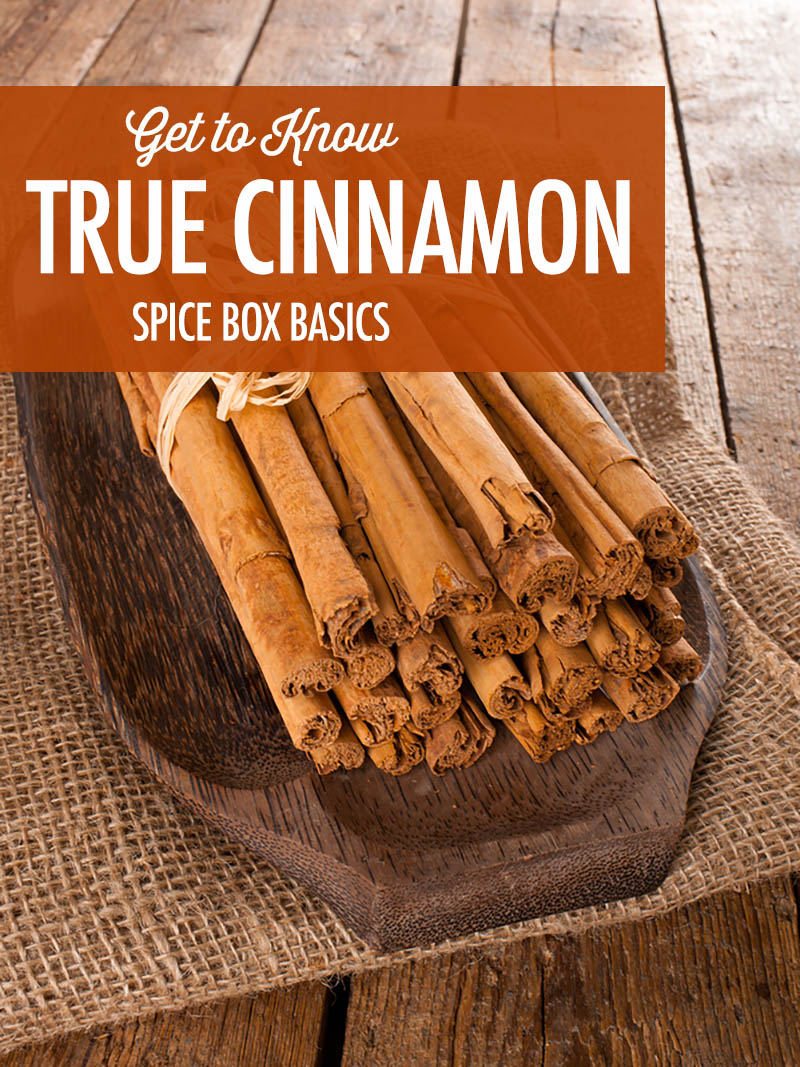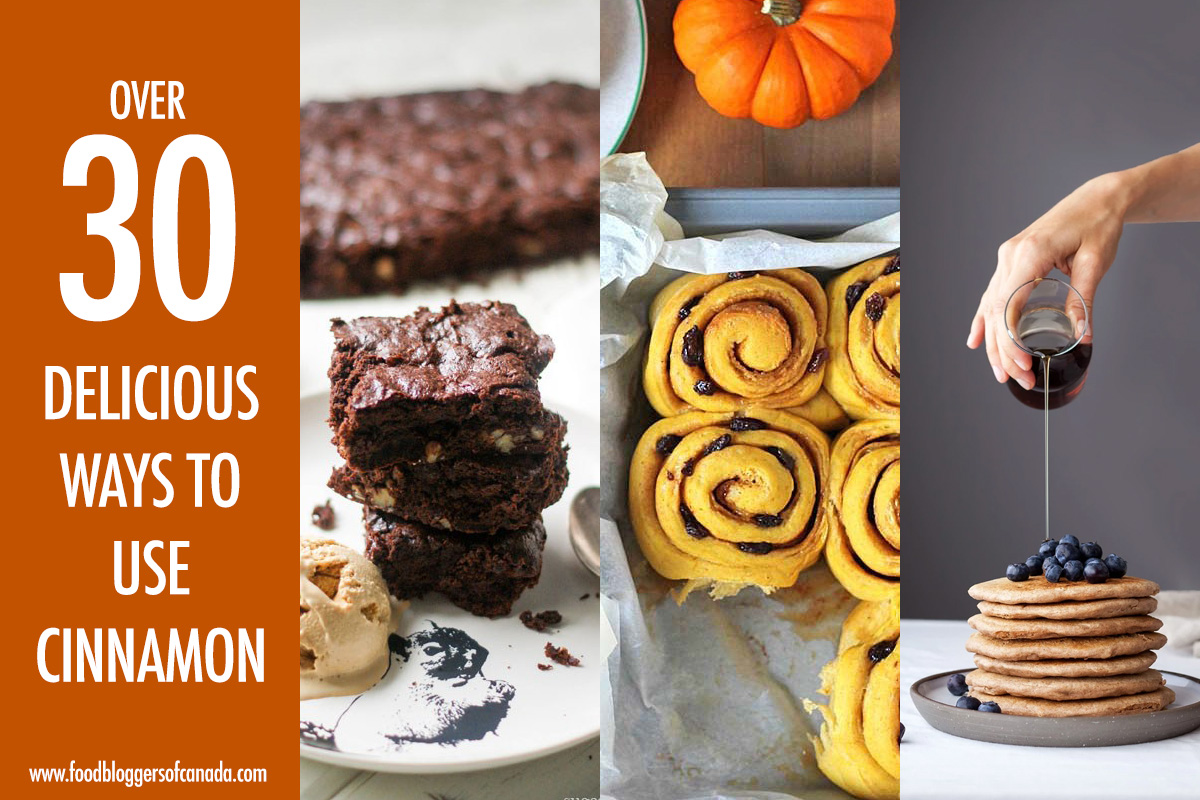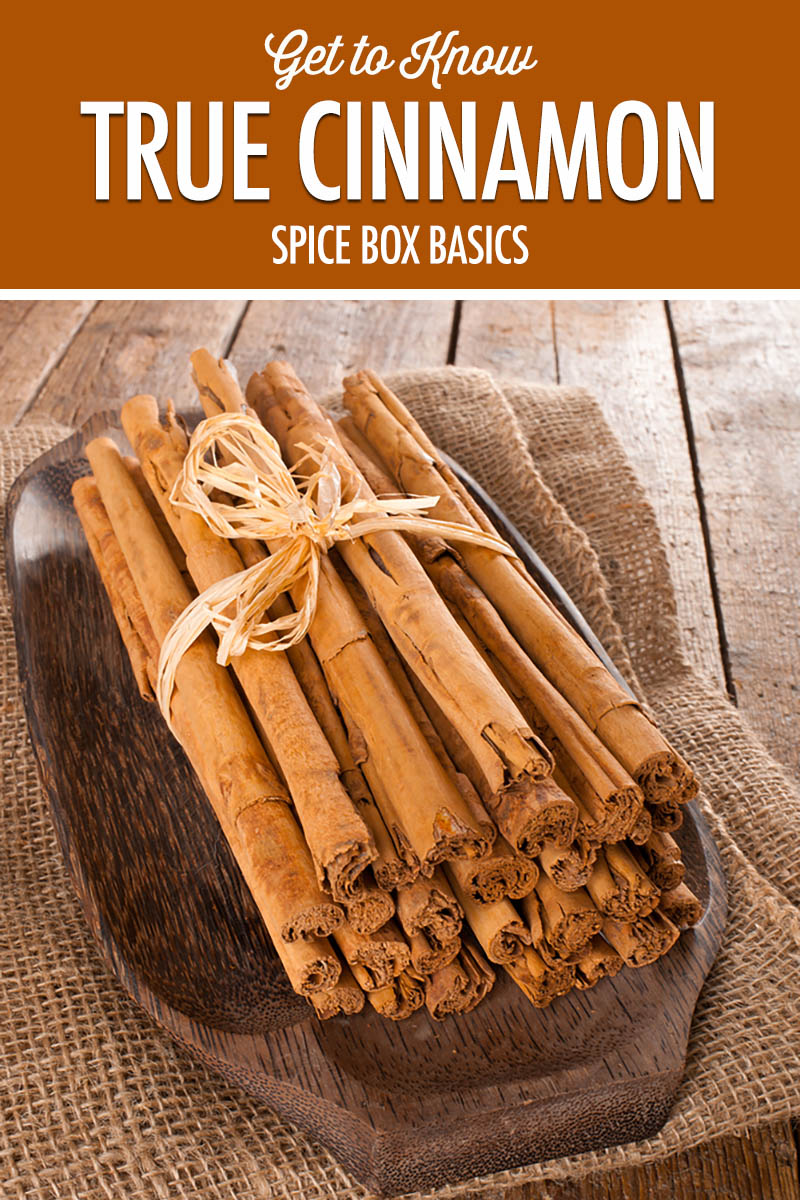Getting to Know "True" Cinnamon is part of FBC's The Spice Box series, where we aim to help you build a well stocked spice cabinet that takes your cooking to the next level! What is true cinnamon? And how can you use cinnamon in your kitchen? Read on to find out!

Latin Name for Cinnamon: Cinnamomum Verum
I don't know anyone who can resist the warm, soothing fragrance of cinnamon. This aromatic spice is used in everything from mulled wine to delicately spiced curries, to mouthwatering cinnamon buns and baking all kinds of goodies.
Where Does Cinnamon Come From?
Cinnamon has been prized everywhere since it was discovered by the Egyptians in about 2000 BC. It's not surprising that it is a staple in Middle Eastern cooking as well as in cuisines from all over the world. Mexican cuisine prizes its 'cannella' and no Indian spice cupboard is complete without its distinctive curls and bark.
There are several varieties of cinnamon but today we're focusing on the genus called 'true' cinnamon that is commonly grown in Sri Lanka (Ceylon Cinnamon). Another piece on its sister spice, cassia bark will be coming soon.
'True' Cinnamon is mainly produced in Sri Lanka, also known as Ceylon and the southern states of India, and the majority of the crop produced is exported. It has a fascinating colonial history, and is considered a spice fit for kings.
'True' Cinnamon is painstaking to produce, as the bark has to be first carefully stripped off, after which the inside of the tree is gently stripped into thin layers. These layers have to be processed quickly, at which point they curl into their characteristic quills. There are several grades of cinnamon, and it is usually graded on colour, aroma and appearance.
What Does 'True' Cinnamon Taste Like?
Of course, the major flavour profile of 'True' Cinnamon is its sweet, intensely fragrant, warm, woody aroma. Ceylon cinnamon has also been known to have a slightly citrussy flavour to it. It is an instantly distinguishable spice and a powerful one where a little goes a long way!
How To Use Cinnamon In Your Kitchen
'True' Cinnamon is the variety that you are most likely to see in regular Western supermarkets. It's sold in curly quills or ground.
Ground cinnamon is used regularly in pretty much any or all baking and cooking recipes that call for just cinnamon. Its particularly good paired with chocolate, as is often done in Mexico, and of course, it's ubiquitous in coffee shops all over North America as a topping for lattes and chai.
While not as well known as a spice for savoury cooking, cinnamon pairs well with lamb and chicken - particularly when braised or roasted. Lamb Tagine might come to mind! Cinnamon is also often used in soups, curries and chili and you can even find it in alcohol - Fireball Cinnamon Whiskey is one of the more well known ones.
The quills tend to be used whole, usually to flavour the recipe, and tend to be removed at the end. Mulled wine, for example, or Horchata tend to use the quills whole as flavoring. You can also grate or powder up these quills, as they are not as hard as cassia bark.
You can buy cinnamon in any supermarket. However, it's worth buying whole cinnamon from Asian groceries where they have a high turnover of spices, as the flavour does degrade once it's been ground. Whole cinnamon will also degrade in flavour, but not as much as ground, and it's a pretty stable spice otherwise.
Other Uses For Cinnamon
Along with its use in the culinary world, cinnamon is also used in the perfume industry, where its essential oils form the base of many perfumes. A lower grade of cinnamon is used in home fragrance and the candle industry.
And finally... did you know that South East Asians call cinnamon 'kayu manis' or sweet wood? Now that's a description which completely awakens the romantic in me.
Over 30 Cinnamon Recipes For You To Try

More Reading
- Spice Box Basics: Get To Know Cassia Bark
- Spice Box Basics: Get To Know Nutmeg
- Spice Box Basics: Get to Know Allspice
Pin It For Later

The Spice Box is written by Michelle Peters-Jones, author of the The Tiffin Box blog where she writes about East Indian, British and Canadian food, with a strong focus on using fresh, local and sustainable ingredients. She stumbled into the world of food after competing on the BBC’s Masterchef UK. She is a freelance recipe tester and food writer and teaches Indian cooking classes in Edmonton. Michelle was born and brought up in India and lived in England for several years before moving to her current home in Edmonton.







Interesting. I was under the impression that most “cinnamon” we buy is really cassia. Do you know how to spot the difference?
Julia, a lot of what is sold as ground cinnamon tends to be cassia as its a lot cheaper. If you buy cinnamon in quills it will most likely be true cinnamon. Whole cassia is a highly distinctive spice, the next Spice Box column focusses on it.
Interesting article but you refer to cinnamon verum in your article but you’ve used photos of cinnamon cassia.
The 2 types of cinnamon (verum and cassia) are distinctly different in their stick form.
Ceylon cinnamon also performs on a cellular level, which classifies it as an anti-inflammatory food. It helps to prevent the release of some inflammatory acids. Some people have reported positive results when using it to reduce inflammation.